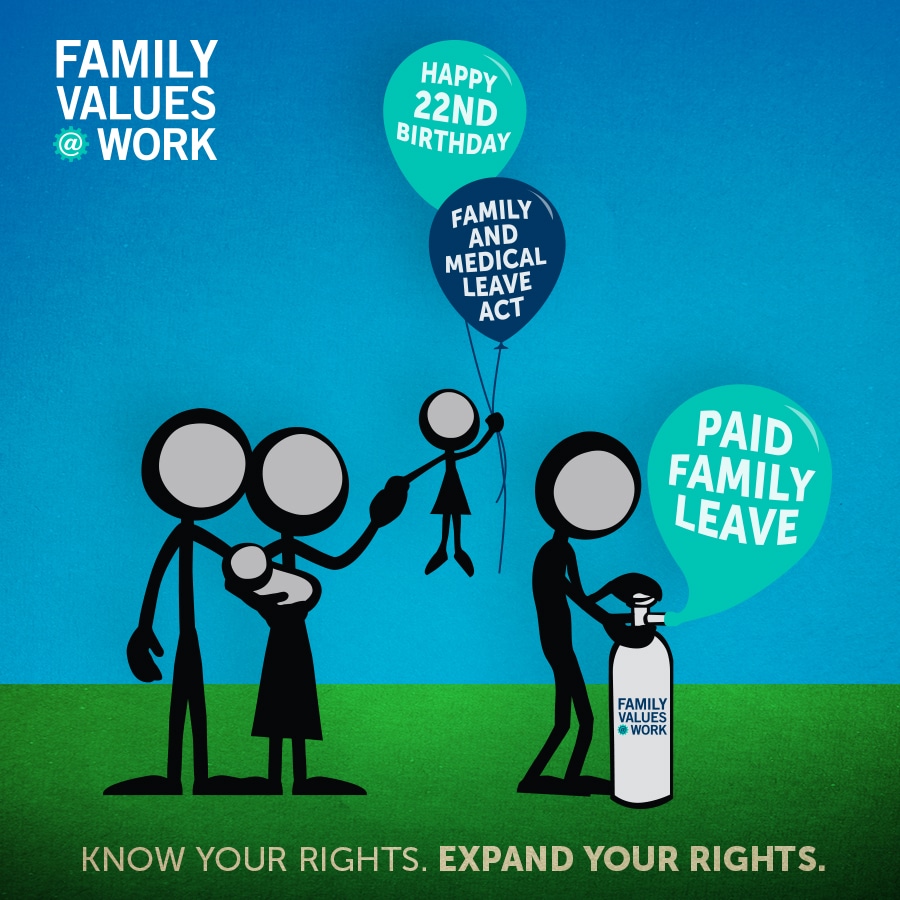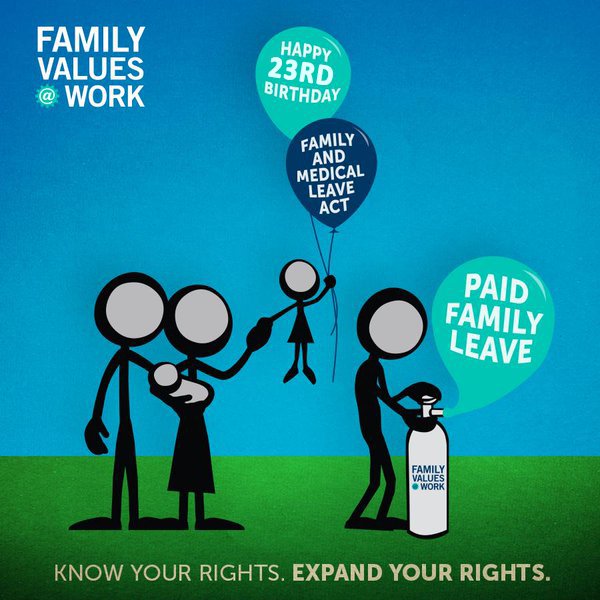Family Leave: A View from the Future

By Ellen Bravo
Our kids can’t imagine what life must have been like with no internet, no cell phones, no Skype. “How did you manage?” they ask us. “Didn’t you hate it?
Some day we’ll say the same about all those years without paid family leave.
We know how we managed before cell phones or the internet – much less efficiently, and often at great cost. We lost opportunities; it took much longer to communicate with each other, get emergency assistance on the road, or simply get things done. We didn’t like it but we didn’t know that it could be different. It seemed as impossible as whooshing with the Jetsons through outer space.
Today most Americans don’t know what it means to have affordable family leave – time to bond with a new baby, to devote oneself to the care of a dying spouse or parent, or to tend to a bedridden child without worrying about how to pay the rent. The percentage of employers offering fully paid maternity leave has actually declined substantially in recent years.
Except this time around, we do know life can be different. We’ve seen what paid leave looks like in other countries and even some states in the U.S.

We hear that mothers of new babies just across the border in Canada can take up to 50 weeks leave at 55 percent of their pay. We know that in Iceland, leave is referred to as “3 + 3 + 3” – three months paid for each parent, and another three months they can split. By 2016 it will become 5 + 5 + 2. Dads, or the non-child-bearing parent, can take equivalent paid time as the mother who gives birth – and must take the time or the family loses it. Not surprisingly, most dads in Iceland take the leave. And after a year and a half, 70 percent of those couples are sharing care of their kids.
The three U.S. states – California, New Jersey and Rhode Island – with family and medical leave insurance funds offer much more modest time to care. Unlike Canada and Iceland, there are no public revenues helping to defray the cost. Still, worker premiums are modest. More people who need leave are taking it and for longer periods of time. Babies are more likely to be breastfed, receive regular check-ups, and get critical immunizations. More dads are involved. Women are more likely to go back to their jobs and see increased pay.
Some day we’ll hear about people like the woman in Nebraska who visited her terminally ill husband in the hospital each morning, kissed him good-bye and went to work, because otherwise she couldn’t keep a roof over their kids’ heads. We’ll listen and say, “How did anyone manage? Didn’t you hate it?”
We’ll be flabbergasted to know about the Colorado woman who took the opposite course and used leave because she’d promised her dad she’d care for him in his final months. “My father lived just long enough for me to lose my job,” she wrote the president. “My family now lives in an RV… My daughter was forced to move in with friends so that she could continue to go to her local school, but has since had to move down to Texas to live with her sister. It took me another five months to get a job and get back to work.”
On February 5, we celebrate the 23rd anniversary of the Family and Medical Leave Act, which established a standard of up to 12 weeks unpaid leave to care for a newborn or serious personal or family illness. That leave has now been used more than 200 million times. Before passage, many of those who used FMLA could not imagine taking the time they needed without losing their job or health insurance.
On this anniversary, let’s look forward to the day when taking time without pay will seem just as unimaginable to us as rotary phones. Sen. Kirsten Gillibrand and Rep. Rosa DeLauro have a bill called the FAMILY Act, which would be a good start toward affordable family and medical leave.
It’s not interstellar travel. But it also isn’t rocket science. We know what it looks like and how well it works. Now we have to work together to get it done.
Updated Feb. 4, 2016